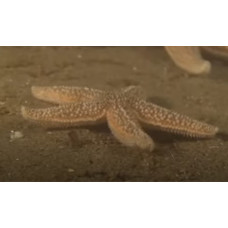Echinodermata are an independent and very peculiar type of the animal world. According to the plan of their structure they are absolutely not comparable with any other animals, and because of the peculiarities of their external organisation and the original shape of the body, which resembles a star, a flower, a ball, a cucumber, etc., they have long attracted attention. The name "Echinodermata" was given by the ancient Greeks. In ancient times, the animal kingdom included starfish, holothurians and sea urchins.
Among modern echinoderms, the class Asteroidea can be distinguished, with a star-shaped or multi-lobed body and a mouth in the centre of the underside facing the substrate; the class Ophiuriidea, very similar to starfish, but with rays strongly laced from the disc; the class Echinoidea - almost spherical animals, without elongated rays; Class Holothurioidea, sac-like or worm-like animals with the mouth and anus almost always at different ends of the body; Class Crinoidea, flower-like with strongly branched rays, with the mouth and anus close together and on the same side facing upwards.
Echinodermata
Tags: echinodermata



